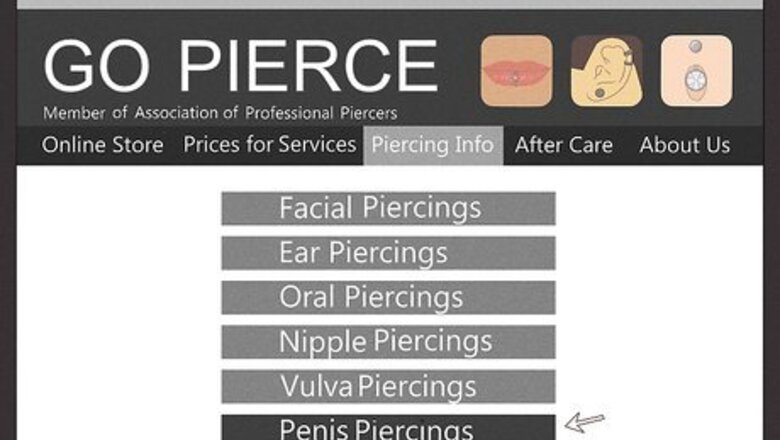
views
About Penis Piercings
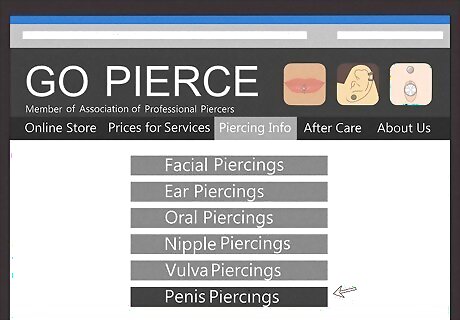
Penis piercings should only be done by a professional. You’re poking holes in your crown jewels, after all, and it’s best to put those jewels in trained hands that know what they’re doing. Research your local tattoo and piercing studios, and ask if their resident body piercer is comfortable doing a penis piercing.

The Prince Albert is the most common style of penis piercing. The Prince Albert is pierced through the urethra, while a frenum piercing is done at the base of the penis head. Both these styles cause relatively little pain (or at least, as little pain as a penis piercing can cause), and heal in about 10-20 weeks. Other piercing styles include: A frenum ladder or "Jacob's ladder" piercing is done horizontally across the underside of the penis, a bit further down, and only pierces the skin. An ampallang piercing is similar to a frenum, but pierces the upper portion of the head. An apadravya piercing spans the head from the topside to the underside. A dydoe piercing enters through the skin of the shaft and exits through the base of the head. A foreskin piercing pierces only the foreskin, and can be positioned in a variety of ways. A scrotum piercing pierces the skin of the scrotum. A pubic piercing is placed at the base of the penis.
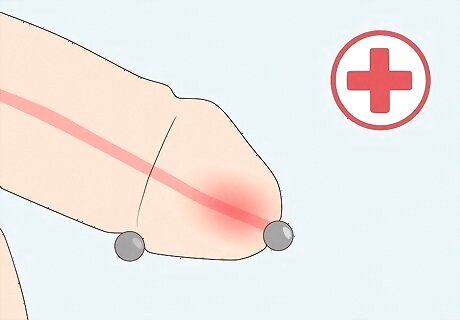
A penis piercing may cause some health complications. Aside from skin infection (which can happen with any piercing), some penis piercings may cause abnormal urinary flow, especially those inserted into the urethra. In addition, they may interfere with your ability to maintain an erection or reach orgasm. In addition, penis piercings can cause increased risk of STIs and UTIs, risk of injury during sex, and run the risk of tissue rejection at the site of the piercing.

Penis piercings hurt about as much as any other body piercing. Which is to say that yes, they do hurt, but the pain varies. Different piercings styles come with different levels of pain, and it generally depends on whether the piercing goes through tissue or merely skin—the former may hurt more. Some say that having their septum pierced hurt more than having their penis pierced, for what it’s worth.
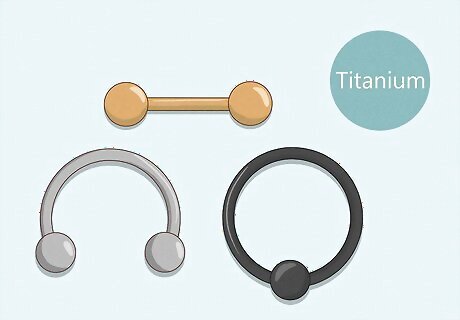
Jewelry for penis piercings are often made of titanium. Surgical titanium is hypoallergenic and doesn’t usually cause reactions in sensitive skin. Depending on the style of piercing, you’ll get a circular barbell, straight barbell, or a captive bead ring, each of which have removable beads on one or both ends for easy removal. Other jewelry materials include plastic, niobium, gold, or platinum.

A piercing can cost anywhere from $40-$100 or more. It’s definitely something of an investment, and if you ask us, it’s better to pay more for a penis piercing than to skimp on costs. You get what you pay for, as they say. Titanium jewelry for penis piercings usually costs around $15 or more, while other materials like gold or platinum can run you hundreds of dollars.

A penis piercing may enhance pleasure during sex. Yes, it’s true, but it’s also not guaranteed. Many people with penis piercings do report satisfaction when it comes to their sex lives, but they also report increased tenderness and general sensitivity—meaning that you have to be careful and mindful when having sex with a penis piercing.
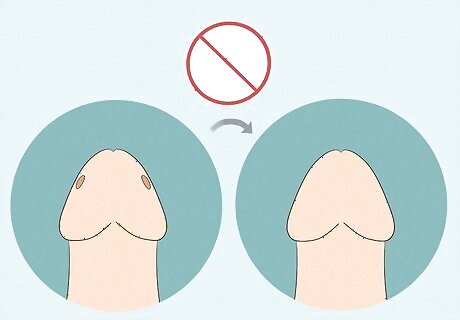
Penis piercings may be permanent. You can take the jewelry out any time you like, but there’s no guarantee the piercing will close completely. If you’re considering a penis piercing, be absolutely sure that you want it, and that you’re cool with having your equipment permanently altered.
How It’s Done

A professional piercer first sterilizes and marks the piercing site. This is done with alcohol swabs and sterilized gloves, and reduces the risk of infection. Then, the piercer marks where the piercing will enter and exit the penis with a marker, to ensure you have your preferred placement, and to help the piercer with accuracy.
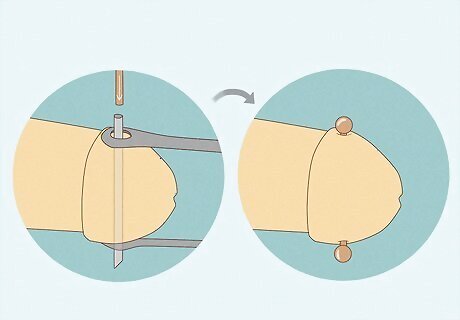
The piercer then inserts the piercing needle and the piercing. The piercing needle is a hollow tube that creates the actual piercing. Once inserted, the piercer threads the jewelry through the needle, and removes the needle itself. It only takes a moment, and your piercer will guide you through the process and help you manage any pain. Depending on the type of piercing, your piercer may use sterilized forceps to hold the skin in place.

The piercer examines the piercing and debriefs aftercare procedures. Afterward, your piercer will make sure the piercing was done cleanly and accurately, and will probably clean the site once more. Then, they’ll inform you on aftercare requirements like healing time, washing, and other health concerns regarding your specific style of piercing.
Aftercare

Always wash your hands before you touch your piercing. There’s a world of bacteria even on the most hygienic person’s hands, and a wound on your penis is the last place you want that bacteria. To prevent infection, thoroughly wash your hands with soap and warm water before handling your piercing in any context.

Clean the piercing twice a day with warm salt water. Mix about 6 parts warm water with 1 part sea salt in a bowl, and soak the piercing in the mixture for a few minutes. Alternatively, soak a clean cloth or gauze pad in the mixture and compress it gently onto the piercing for a few minutes. Be sure to clean the entry and exit sites of the piercing, gently shifting the piercing to clean as much of the hole as possible. Dry the piercing only with a dry paper towel. This prevents any particulate or bacteria from entering the piercing. Avoid using antibacterial disinfectants or other products on the piercing, which can kill good bacteria that aids the healing process. You may experience some pale, odorless fluid discharge while your piercing heals. This is normal, and can simply be cleaned with the rest of the piercing.

Check for infection daily. Signs of infection include swelling or redness, severe burning or throbbing sensations, acute tenderness or pain when the site of the piercing is touched, and yellow or green discharge with a foul smell. Examine your piercing for signs of infection, and if you experience any of these symptoms, visit a medical professional immediately.
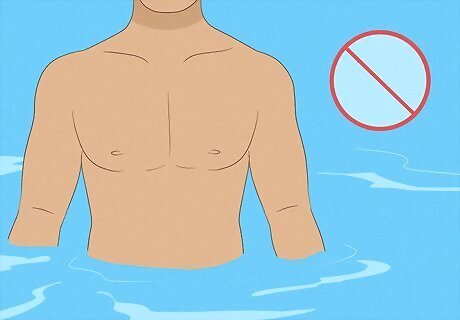
Avoid swimming or standing bodies of water until the piercing heals. Swimming pools, hot tubs, rivers, the ocean—all of these are petri dishes of bacteria, and submerging your piercing in any of them is an invitation for infection. Stay out of the pool for about 6 months or until the piercing heals, and stick to showers in the meantime.

Abstain from any sexual activity for about 6 weeks. Having sex before the piercing has dried (in other words, there’s no bodily discharge) puts you at great risk for infection or injury. After 6 weeks, always use a condom or other barrier protection to protect from STIs, or be sure both you and your partner are sexually healthy.

Change your jewelry only after the piercing has healed. To do so, thoroughly wash your hands, and apply a saline solution to the piercing area. Then, gently remove the beads of the jewelry and carefully remove it from the piercing. Then, insert the new, sanitized jewelry and secure the beads in place, and rinse the piercing with saline again. To retire a piercing, remove it as directed above, and continue to clean the area as you normally would for a few weeks to prevent infection. Talk to your piercer before retiring a piercing that hasn’t fully healed.

















Comments
0 comment